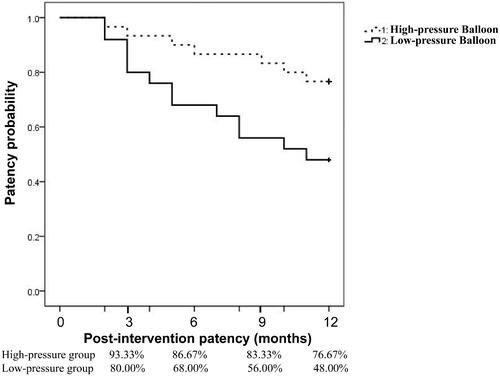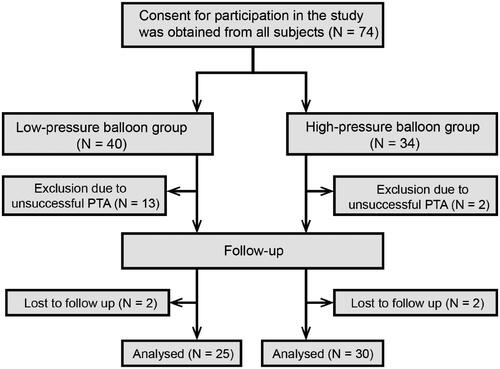Figures & data
Table 1. Baseline characteristics of patients within each group.
Figure 2. Kaplan–Meier curves of primary PTA patency rates between the high- and low-pressure balloon angioplasty arms. Patients who received successful PTA were included for calculating long-term patency rates. Each PTA procedure was treated separately. Comparisons between the low-pressure and high-pressure groups based on results from the Kaplan–Meier analysis and the log-rank test. The patency rate for using high-pressure angioplasty was higher than that of low-pressure balloons (p = 0.02).

Table 2. Patency rates at follow-up in two groups with technical success.
Table 3. Patency rates at follow-up in two groups with technical success after excluded cases with the subclavian vein.

